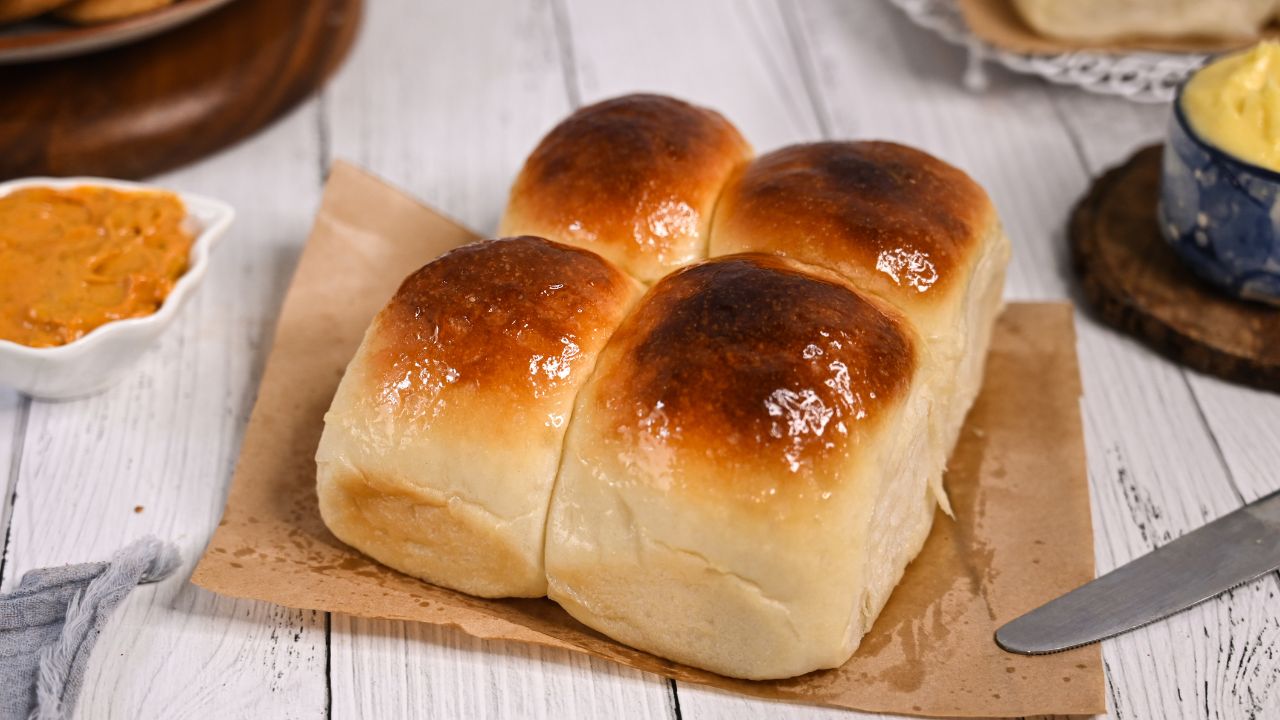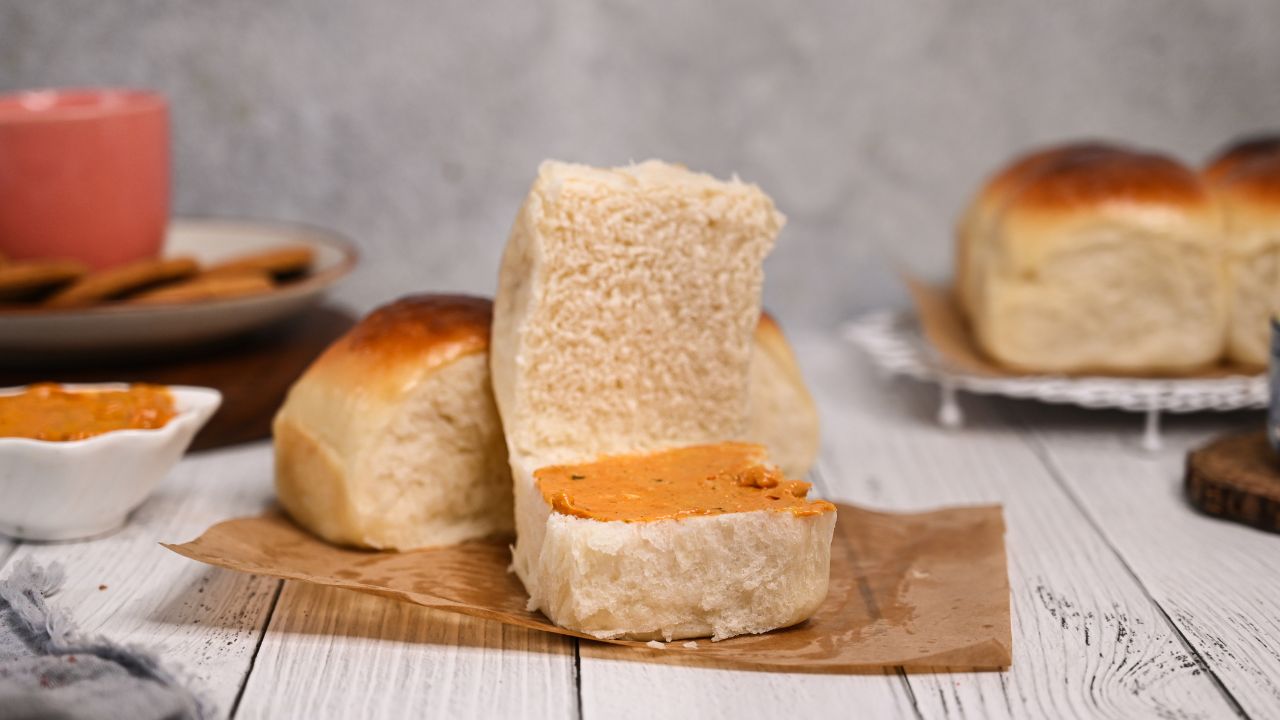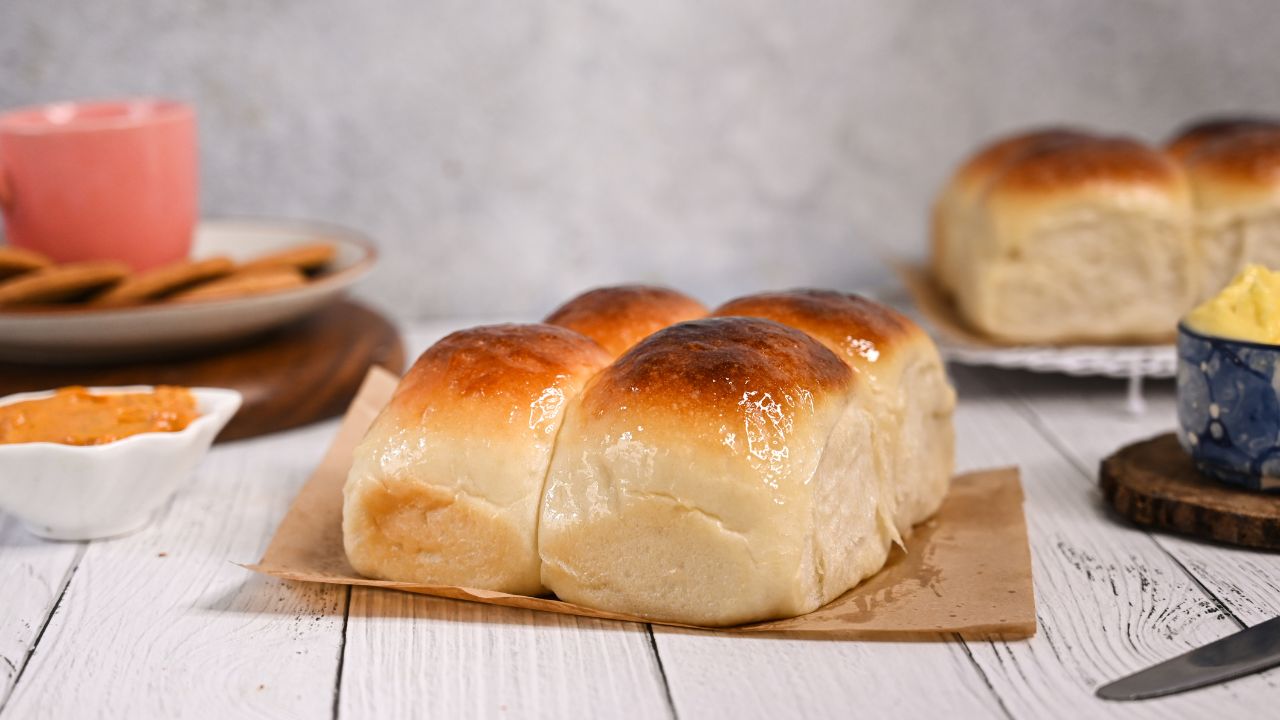These soft, buttery buns are a part of a few famous Indian street foods hailing from Mumbai, Maharashtra. I’m talking about the Indian pav buns, also called Ladi Pav.
If you have ever been to Mumbai, you must have seen most street foods like pav bhaji, missal pav, or vada pav. All these foods have one thing in common, which is the Pav bread. Today, I will be teaching you to make these yummy pav buns at home.
The origin of these pav buns is said to be from the time when the Portuguese had control over The Indian Coastal region, especially Goa. From there, these buns traveled to then called Bombay and became a part of their everyday meals.
These Pav Buns are similar to English dinner rolls; only they are much more softer and bigger. They are eaten with bhaji (vegetable curry), vada (deep-fried potato snack), and missal (sprouted Moong dal curry). They are also now eaten as Bun Maska, which simply means bun and butter.
Eggless Pav Buns Recipe Video Tutorial
Why You’ll Love This Recipe?
- Soft Buns: Did you always wonder how to make these soft buns at home without any preservatives? Well, today you will learn them. These buns are extremely soft; if made correctly, they bounce back when pressed.
- No Preservatives: Market breads almost always contain some preservatives to improve texture and extend shelf life. At the end of the day, they are just chemicals that we eat. These buns will not contain any such preservatives, and they will still be soft.
- Easy Process: Breadmaking can sometimes seem challenging, but if the recipe is followed properly, you won’t face any difficulty. The process of these pav buns is easy to understand and not complicated.
Important Ingredients Used In The Recipe
- All-Purpose Flour: Pav buns are also made using all-purpose flour like other breads. It provides a soft texture and an appropriate gluten level for good structure.
- Instant Yeast: This yeast is best for bread making as you can add instant yeast with dry ingredients also. You need not activate it every time you use it.
- Milk Powder: Milk powder adds a great flavor to the buns. It replicates the milk bread flavor.
- Milk: Milk makes the bread more soft. The fat and richness of the milk help make the bun super tender.
- Castor Sugar: The yeast needs sugar to feed on and activate to give out carbon dioxide. The sugar is not much in quantity but just enough for the yeast.
- Butter: Soft salted butter is added to provide a buttery flavor to the bread. It makes the dough smooth and soft while kneading. It also helps retain the carbon dioxide that is released while baking, leaving the bun well-risen.
How To Make Indian Pav Buns
Preparation: Collect all ingredients with their correct measurements. Preheat the oven to 220C (OTG mode: upper rod + lower rod + fan). Grease a rectangular ring and baking tray with butter. Place this ring in the baking tray.
Dry Ingredients: In a large mixing bowl, take flour, sugar, yeast, milk powder and salt. Give this a quick mix.
Add Wet Ingredients: Add water and milk to the dry ingredients and start kneading to form a dough. Knead it well.
Add Butter: Once the dough starts to form, add bitter and incorporate it into the dough while kneading. Check for the window pane test.
Proofing: Keep the dough for proofing for 20-30 minutes or until the dough doubles in size.
Shaping: Once the dough has proved, degas it and divide it into eight equal portions. Make smooth balls of these portions and place them inside the ring closely side to side.
Proof Again: Keep the shaped balls for proofing again for 20-30 minutes.
Bake: After final proofing, put the buns for baking at 220C (OTG mode: upper rod + lower rod + fan) for 20-25 minutes. After baking is done, do the temperature check using a digital kitchen thermometer.
Cool and Serve: Remove the ring gently from the buns and brush the top with melted butter. This will make the top soft as it would be hard right after baking. Let them cool before slicing.
Chef’s Tips For The Recipe
Tip For Temperature Check
For soft breads, the inside temperature of the bun must be beyond 86C. If the pav buns show a temperature beyond 86C by poking the kitchen thermometer in the center, then consider the bread done.
Avoid Burnt Top
It may so happen that the top of the buns may get darker even before the buns have baked fully. To avoid this from happening, you can loosely cover the top of the buns using aluminum foil so that the heat does not make the top burn.
Tip For Kneading and Shaping
A good bread depends on good kneading and shaping. It would be best if you kneaded the dough well. For this, always do the window pane test by stretching a small piece of dough until it becomes translucent and doesn’t break.
If the buns are not shaped properly, you have a lumpy or open bottom. Make sure to seal the buns nicely.
How To Store Pav Buns
To Store the soft buns, cling wrap it and then store it in an airtight box. Consume it within 2-3 days.
More Easy Recipes
If you are in for some great savory recipes, then you must check these out.
Frequently Asked Questions
There is no fixed time. Always check for the window pane test to see the doneness of the dough. If you over-knead, the dough will start to become sticky again.
You may brush some milk on top of the buns. Without the milk also, you will get the color, though.
Yes, you can use a stand mixer with a hook attachment for the kneading process. You will still have to do the window pan test.
They are eaten with the earlier-mentioned dishes. However, you can eat the bun just like that or any other way you wish to.



